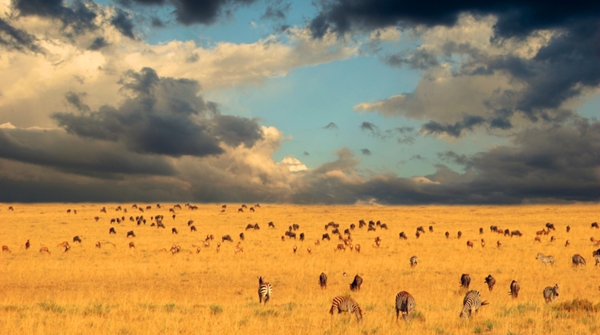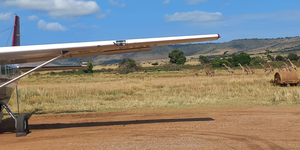Like this article?
Go on, give it a kudu!

Published on June 16 2013
Written by:
Fran
766 views
Our continuously increasing global population is leaving impact damages across the globe. Even Africa, which may seem far removed from the smog air pollution of crowded cities, high greenhouse gas levels and excessive resource consumption, but that does not leave the continent without humanity’s huge and deep footprint. Today, only two great game migration routes remain in Africa. One, the Serengeti migration route, is threatened by the proposal to build a highway through the migration route and across Tanzania’s Serengeti National Park.
The plans to build a highway through the Serengeti are not new; it's been around for more than two decades. The planned highway is in the annual Great Migration domain: 750,000 zebra, 1.2 million wildebeest and thousands of other East African game trek up to 1,800 miles across the Serengeti, from Tanzania to Kenya’s Masai Mara, in search of food and water. Every year at the end of East Africa’s rainy season, we are offered one of the world’s greatest natural sights. We find ourselves glimpsing into the lives of herd animals following their instincts. There are many obstacles and dangers along the way. Predators line the migration route, aiming for the young and weak, and then there’s big Grumeti River than needs to be crossed. But perhaps the biggest obstacle faced by the migratory species is the proposed Serengeti highway.
Tanzania’s Serengeti National Park is a true wilderness area, with limited infrastructure and only staff members allowed to reside in the park permanently. The park covers 5,700 square miles, lending truth to the literal meaning of “Serengeti” – the place where the land runs forever. The park enjoys a number of formal protection listings, including protection from UNESCO’s World Heritage Site listing and the local Tanzanian National Parks Authority.
More than twenty years ago, the Tanzanian Government identified what they considered to be a need for a commercial highway. The intended purpose of the commercial road is to create a major transit route linking Rwanda, Burundi, and the eastern Congo. The current plans involve approximately 35 miles bisecting the northern wilderness section of the park – crossing the Great Migration route! Tanzania applied to the World Bank for funding two decades ago when the plans first came under discussion. An Environmental Impact Assessment was undertaken and based on the assessment’s outcome, the World Bank refused funding for the project. Even in its early days it was clear: the project has major red flags. Initially, the Tanzanian Government envisioned that construction would be completed during early 2012 and that significant volumes of traffic will be diverted to the newly developed highway. But the international conservation community reacted vehemently from the very first moment. And yet it does not take a conservation scientist to realize what’s at stake: the Serengeti wilderness is of irreplaceable value and millions of animals depend on the safe keeping of the park. On the other side, the economic need for improved transport for the region was apparent decades ago, and even more so today. Although the World Bank offered financing for alternative transport options, these were rejected by the Tanzania Government. And twenty years on, the Tanzanian Government insists on the importance of building this commercial highway.
In the next upcoming article, the environmental impacts of the proposed highway will be explored in greater detail. What impact will the road have on the game populations? What will it mean for the protection of the park? How desperately does the local and neighboring communities need this commercial highway? Are there feasible and environmentally acceptable alternatives? Find these answers in Part 2 of this series!
The proposed Serengeti Road (2010). The Frankfurt Zoological Society, Serengeti National Park
UNESCO World Heritage Sites http://whc.unesco.org/en
Has been on: 11 safaris
Seeing beyond the average tourist routes and experiencing local life is my type of travel! Living in South Africa I'm an environmentalist at heart, and I continue to marvel at the beauty of the African continent.
© Your African Safari Ltd, All rights reserved.
Your African Safari is a safari-planning and safari review site. It was created to help support a healthy African wildlife population. All reviews are vetted before being approved and only ethical tours are published

Using charter flights on your next safari
Published on December 22 2025
By: yourafricansafari.com

Garamba National Park—an anchor of hope in the Democratic Republic of Congo
Published on January 09 2025
By: R.W.

Namibia imposes new visa requirements
Published on July 25 2024
By: yourafricansafari.com